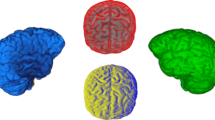Abstract
Interactive visualization of volume models in standard mobile devices is a challenging present problem with increasing interest from new application fields like telemedicine. The complexity of present volume models in medical applications is continuously increasing, therefore increasing the gap between the available models and the rendering capabilities in low-end mobile clients. New and efficient rendering algorithms and interaction paradigms are required for these small platforms. In this paper, we propose a transfer function-aware compression and interaction scheme, for client-server architectures with visualization on standard mobile devices. The scheme is block-based, supporting adaptive ray-casting in the client. Our two-level ray-casting allows focusing on small details on targeted regions while keeping bounded memory requirements in the GPU of the client. Our approach includes a transfer function-aware compression scheme based on a local wavelet transformation, together with a bricking scheme that supports interactive inspection and levels of detail in the mobile device client. We also use a quantization technique that takes into account a perceptive metrics of the visual error. Our results show that we can have full interaction with high compression rates and with transmitted model sizes that can be of the order of a single photographic image.











Similar content being viewed by others
References
Boada I, Navazo I, Scopigno R (2001) Multiresolution volume visualization with a texture-based octree. Vis Comput 17(3):185–197
Butson C, Tamm G, Jain S, Fogal T, Kruger J (2012) Evaluation of interactive visualization on mobile computing platforms for selection of deep brain stimulation parameters. In: IEEE transactions on visualization and computer graphics. IEEE Computer Society. doi:http://doi.ieeecomputersociety.org/10.1109/TVCG.2012.92
Guthe S, Strasser W (2001) Real-time decompression and visualization of animated volume data. In: Proceedings of IEEE visualization 2001. IEEE Computer Society, pp 349–356
Hadwiger M, Kniss JM, Rezk-salama C, Weiskopf D, Engel K (2006) Real-time volume graphics. A. K. Peters, Ltd., Natick
Ihm I, Park S (1998) Wavelet-based 3D compression scheme for very large volume data. In: Graphics Interface, pp 107–116
Ihm I, Park S (1999) Wavelet-based 3D compression scheme for interactive visualization of very large volume data. Comput Graph Forum 18:3–15
ImageVis3D: a real-time volume rendering tool for large data. Scientific Computing and Imaging Institute (SCI). http://www.imagevis3d.org
Jeong S-J, Kaufman AE (2007) Interactive wireless virtual colonoscopy. Vis Comput 23(8):545–557
Kim T-Y, Shin Y-G (1999) An efficient wavelet-based compression method for volume rendering. In: Pacific conference on computer graphics and applications, p 147
Krüger J, Westermann R (2003) Acceleration techniques for GPU-based volume rendering. In: IEEE Vis, pp 287–292
LaMar E, Hamann B, Joy KI (1999) Multiresolution techniques for interactive texture-based volume visualization. In: IEEE Vis, pp 355–361
Lamberti F, Sanna A (2005) A solution for displaying medical data models on mobile devices. WSEAS Trans Inform Sci Appl 2:258–264
Mantiuk R, Kim KJ, Rempel AG, Heidrich W (2011) Hdr-vdp-2: a calibrated visual metric for visibility and quality predictions in all luminance conditions. ACM Trans Graph 30(4):40
Moser M, Weiskopf D (2008) Interactive volume rendering on mobile devices. Vis Model Vis 8:217–226
Muraki S (1992) Approximation and rendering of volume data using wavelet transforms. In: VIS’ 92: proceedings of the 3rd conference on visualization’ 92. IEEE Computer Society Press, Los Alamitos, pp 21–28
Nguyen K, Saupe D (2001) Rapid high quality compression of volume data for visualization. Comput Graph Forum 20(3):49–57
Ning P, Hesselink L (1992) Vector quantization for volume rendering. In VVS ’92: proceedings of the 1992 workshop on Volume visualization. ACM, New York, pp 69–74
Noguera J, Jiménez J (2012) Visualization of very large 3D volumes on mobile devices and WebGL. In: 20th WSCG international conference on computer graphics, visualization and computer vision. WSCG
Noguera JM, Jiménez J-R, Ogáyar CJ, Segura RJ (2012) Volume rendering strategies on mobile devices. In: GRAPP/IVAPP, pp 447–452
Röttger S, Guthe S, Weiskopf D, Ertl T, Straßer W (2003) Smart hardware-accelerated volume rendering. In: VisSym
Schneider J, Westermann R (2003) Compression domain volume rendering. In VIS ’03: proceedings of the 14th IEEE visualization 2003 (VIS’03). IEEE Computer Society, Washington, DC, p 39
Strengert M, Magallon M, Weiskopf D, Guthe S, Ertl T (2004) Hierarchical visualization and compression of large volume datasets using GPU clusters. In: 5th Eurographics/ACM SIGGRAPH symposium on parallel graphics and visualization (EGPGV 2004), pp 41–48
Vázquez P, Balsa M (2012) Practical volume rendering in mobile devices. In: International simposium on visual computing, Rethymnon, Crete
Weiler M, Westermann R, Hansen CD, Zimmerman K, Ertl T (2000) Level-of-detail volume rendering via 3D textures. In: Volviz, pp 7–13
Zhou H, Qu H, Wu Y, Chan M (2006) Volume visualization on mobile devices. In: 14th Pacific conference on computer graphics and applications, pp 76–84
Acknowledgments
This project has been supported by the TIN2010-20590-C02-01 Project of the Spanish Government. L. Campoalegre has been supported by a UPC PhD grant. The authors would like to thank the anonymous reviewers for their useful comments and Marcos Balsa and Eva Monclús for their help on GPU mobile programming.
Author information
Authors and Affiliations
Corresponding author
Rights and permissions
About this article
Cite this article
Campoalegre, L., Brunet, P. & Navazo, I. Interactive visualization of medical volume models in mobile devices. Pers Ubiquit Comput 17, 1503–1514 (2013). https://doi.org/10.1007/s00779-012-0596-0
Received:
Accepted:
Published:
Issue Date:
DOI: https://doi.org/10.1007/s00779-012-0596-0




